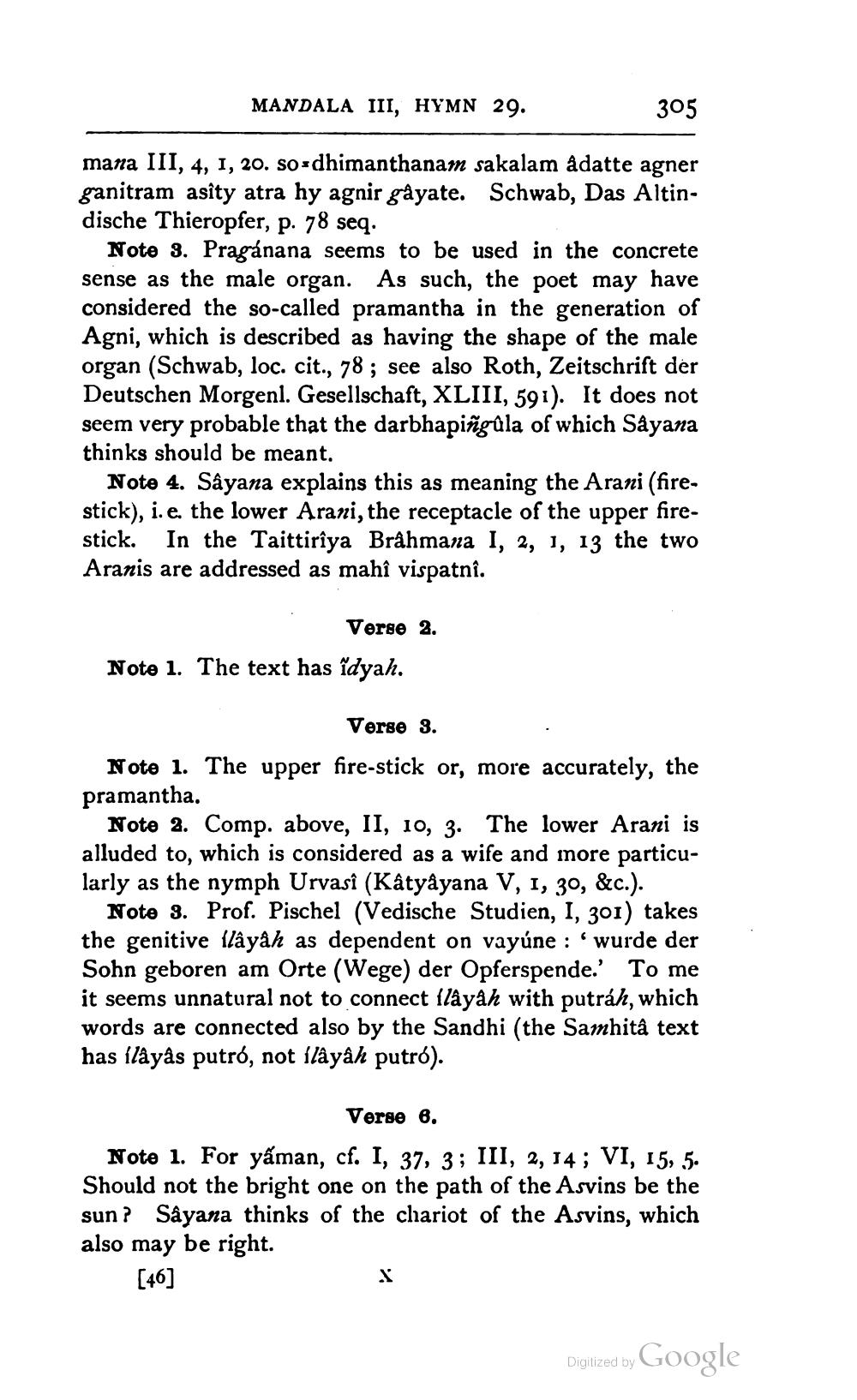________________
MANDALA III, HYMN 29.
305
mana III, 4, 1, 20. so-dhimanthanam sakalam adatte agner ganitram asîty atra hy agnir gayate. Schwab, Das Altindische Thieropfer, p. 78 seq.
Note 3. Pragánana seems to be used in the concrete sense as the male organ. As such, the poet may have considered the so-called pramantha in the generation of Agni, which is described as having the shape of the male organ (Schwab, loc. cit., 78; see also Roth, Zeitschrift der Deutschen Morgenl. Gesellschaft, XLIII, 591). It does not seem very probable that the darbhapiñgula of which Sâyana thinks should be meant.
Note 4. Sâyana explains this as meaning the Arani (firestick), i.e. the lower Arani, the receptacle of the upper firestick. In the Taittirîya Brahmana I, 2, 1, 13 the two Aranis are addressed as mahî vispatnî.
Verse 2. Note 1. The text has idyah.
Verse 3. Note 1. The upper fire-stick or, more accurately, the pramantha.
Note 2. Comp. above, II, 10, 3. The lower Arani is alluded to, which is considered as a wife and more particularly as the nymph Urvasî (Katyayana V, 1, 30, &c.).
Note 3. Prof. Pischel (Vedische Studien, I, 301) takes the genitive flâyåh as dependent on vayúne : 'wurde der Sohn geboren am Orte (Wege) der Opferspende.' To me it seems unnatural not to connect ilayah with putráh, which words are connected also by the Sandhi (the Samhita text has llâyâs putró, not flâyâh putro).
Verse 6.
Note 1. For yảman, cf. I, 37, 3; III, 2, 14 ; VI, 15, 5. Should not the bright one on the path of the Asvins be the sun? Sâyana thinks of the chariot of the Asvins, which also may be right.
[46]
Digitized by Google




